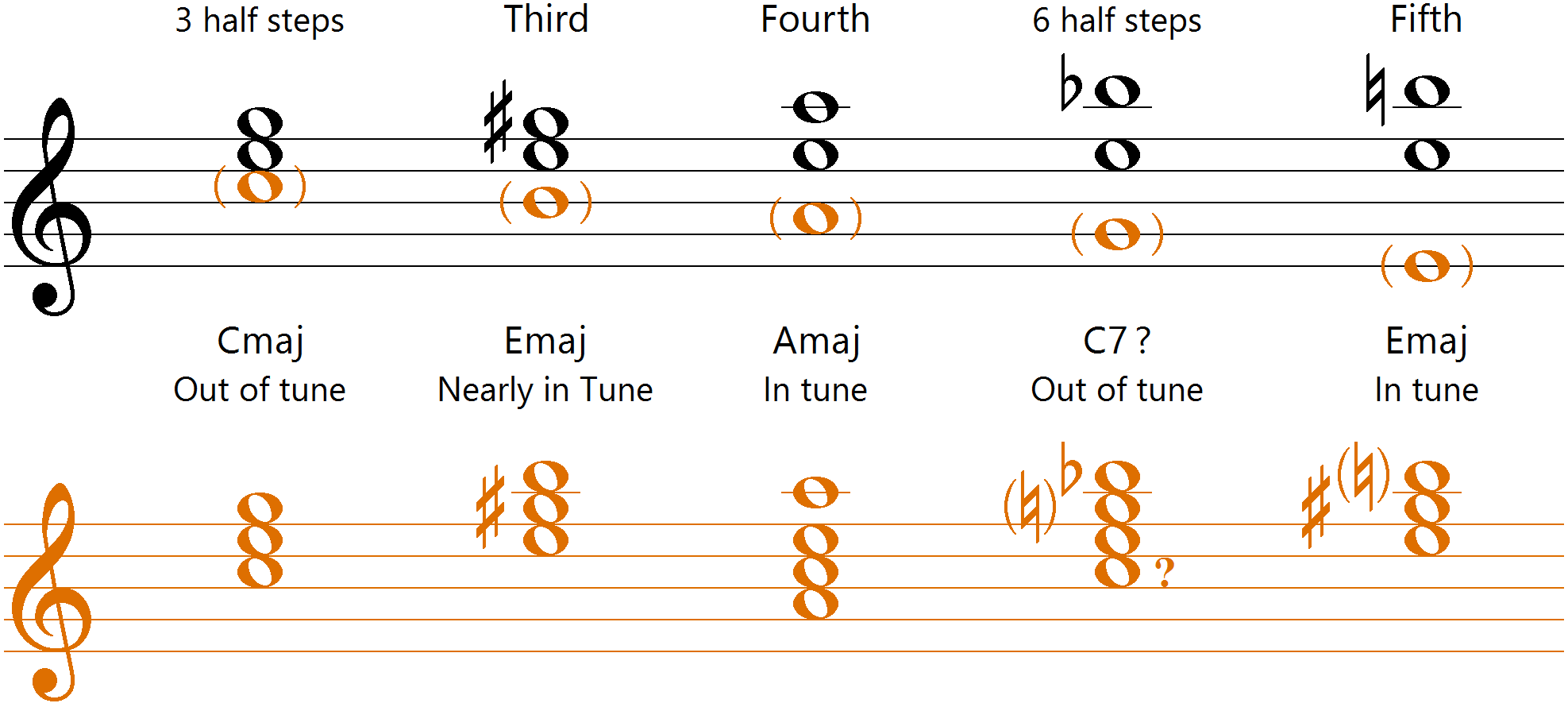Layers of Differences
If someone were to ask, "what's that chord?" or "what's that harmony?" we could answer with varying degrees of specificity. The difference between CMaj and CMaj6 is much less than the difference between CMaj and Cmin. This suggests layers of distinction, and at the bottom lies some 'most fundamental' way of distinguishing chords. What is this most fundamental difference? The 3rd and 5th. But we need the root, too, so that we know which notes are the 3rd and 5th. This sets the requirement at 3 notes to create a definite chord: the 1st to establish the root, and the 3rd & 5th to define the chord quality.
The Role of Harmonic Function
Why are a CMaj and CMaj6 (or CMaj7 and CMaj9) so similar? I think it's because of harmonic function. They play the same role in harmony and are largely interchangeable. That's not to say that one won't be a better choice than the other--there will be scenarios where, e.g., CMaj6 does not complement the melody or resolution as well as CMaj. But even in those cases, wile the substitution may degrade the music, it can nonetheless be made without changing the underlying harmonic function of the chord. By contrast, changing a CMaj chord to a Cmin chord or to a Cdim chord would incur a (usually dramatic) change in the chord's function.
Why This Is So Limited
So the quality of a chord depends on the 3rd and 5th, because those notes largely determine and distinguish between different harmonic functions. But of course, this is an extremely limited statement, because harmonic function can vary from culture to culture, genre to genre, and time period to time period. Many people who say "a chord must have a minimum of 3 notes" actually mean something much narrower and would reject the idea that the notes C-C#-D form a definite chord. Really, when we espouse this criterion, we're working squarely in a particular Western tradition. We could easily imagine a musical tradition tens of thousands of years in the past where every single progression was I-vi, and the only difference between songs was the melody/chant. In that scenario, the 1st and 3rd would be sufficient to define a chord. If fewer types of chords exist, then less information is needed to distinguish them. We could even imagine a musical tradition that evolves so that, e.g., the V chord is always played with just two notes. Any time we hear that 2-note chord, we immediately know that it's a V chord. (I would imagine there are real-world examples to illustrate my point, but my knowledge is far too incomplete to posit what they may be without risking cultural insensitivity.)
Why Is It So Prevalent?
So the 3-notes = definite chord approach has obvious limitations. Yet, it is incredibly ubiquitous (at least in the West--maybe elsewhere), and for this reason, it has tremendous explanatory power. It is ingrained to a point where it's tempting to think of the 3-note requirement as a fundamental truth. Yet it can't be fundamental, because nothing in physics or psychoacoustics would preclude the creation of a simpler musical tradition where (a) 2-note chords were assigned specific and unique functions compared to 3-note chords, or where (b) few enough chords exist that they can be distinguished using only 2 notes, or where (c) chords never have more than 2 notes.
I don't know why the triad is so prevalent as a fundamental harmonic structure. I suspect it's a combination of biology + instrumentation + historical tradition. When the voice speaks or sings, we produce harmonics. The simplest single-note instruments similarly produce harmonics. As musical traditions are constructed throughout history, they begin with the human voice and simple instruments, and from there they build up in complexity. But the familiarity of the harmonic series might have suggested routes for the ever-increasing complexity of a musical tradition. At least, it's not a stretch to imagine that the first person ever to harmonize simply sang what they already were hearing: higher pitches from the harmonic series. There would be a positive feedback loop from this development in a musical tradition: chords drawing from the harmonic series would feel more immediately familiar, and in general humans tend to enjoy music/sounds that are more familiar. The same way that new-born babies recognize their mothers' voices, the harmonic series might have possessed an immediate biological advantage due to its familiarity in the voice and in the first single-note instruments. So it seems reasonable that chords would develop around the 1st, 3rd, and 5th, and that this might be one of the earliest things to become codified in the development of a musical tradition.
Note: in some ways, this feels like a "just-so story," and there are surely limitations to this approach. For example, the major 3rd doesn't appear until we reach the 5th harmonic, so perhaps this argument couldn't be extended to notes beyond the triad because harmonics above the 5th are simply too weak to hear.



